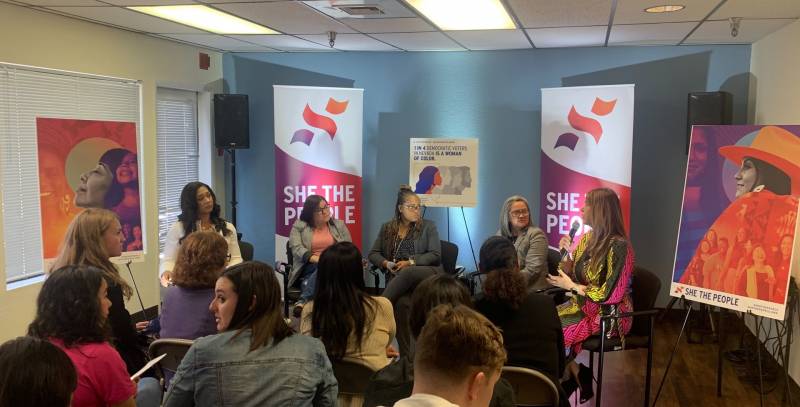“Latinos are the new swing voter. There is an element of us that are very, very progressive, as we have seen in people who are supporting Bernie. And there are folks that are more moderate and centrist. And that is the point, which is Latinos are not a monolith,” she said.
Valencia said that means candidates and other campaigns have to spend time understanding the differences within the Latino community — which could vary widely from state to state — and working for their vote.
“We have to understand this nuance,” Valencia said. “We have unpacked white swing voters in a thousand different ways — this community is the new swing voter. And we have to understand that and invest appropriately.”
Female leaders in Nevada say that extends to other communities of color as well.
“I always want people to remember that black women are not homogeneous, and that we come in all different shapes and flavors,” said Erika Washington, executive director of Make It Work Nevada.
“You could consider yourself a black woman and you still be part Latina or you could part Asian,” she added. “Immigration issues do affect black folks. And so I think for us being able to organize black women, we are organizing anyone who identifies as a black woman.”
Washington said that means campaigns listening, and learning, from communities.
“You need to make sure you see me for who I am and how I identify and respect it,” she said. “Don’t put me in a box. I’m not in your box. I am who I am. And you are going to respect it. And then you’re also going to celebrate it. And then you’re also going to make policies that fit my community.”
What that doesn’t mean, said Valencia, is that Democrats need to choose between women of color and white women.
“It is absolutely a false choice because those suburban swing voters care about a lot of the same issues that the really progressive young Latina cares about as well,” she said.
Valencia said that while her polling shows Latinos across the U.S. do care deeply about immigration reform, she thinks of it as “a gateway issue for Latinos,” but not the only policy they care about.
“It really is how they measure a candidate’s compassion toward immigrants and toward our community, which is why I think Latino voters have such a visceral reaction to Trump’s handling of immigration and separation of families and the border wall and putting kids in cages,” Valencia said.
“That being said, at the end of the day, Latino voters want good health care for their families. They want good paying jobs. They don’t want to have to be working two or three or four jobs to make ends meet. Education has always been a primary concern,” she said.
But Valencia said her polling shows that the Democratic nominee can’t just depend on communities of color to engage because of anger against Trump — they need to find a way to inspire them as well.

